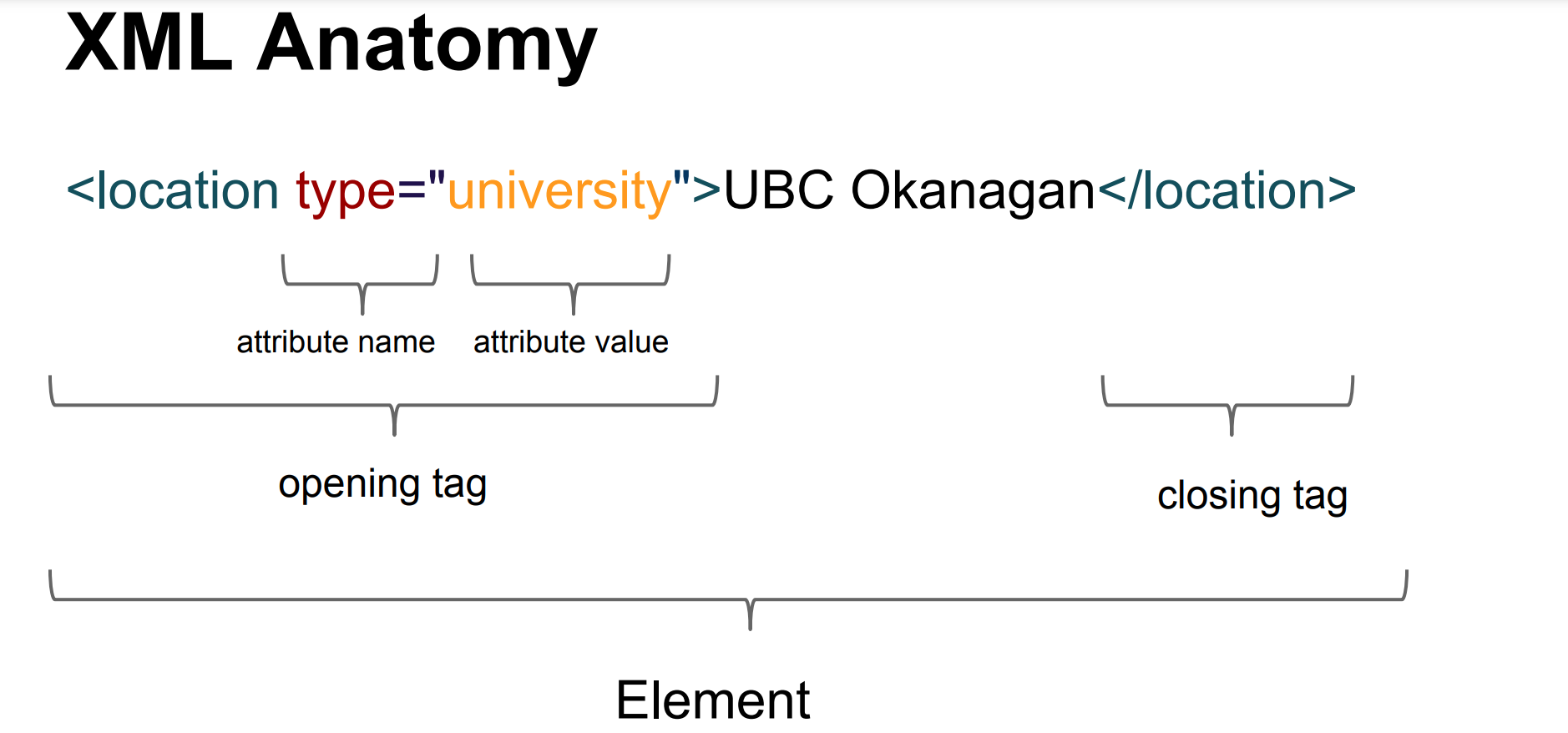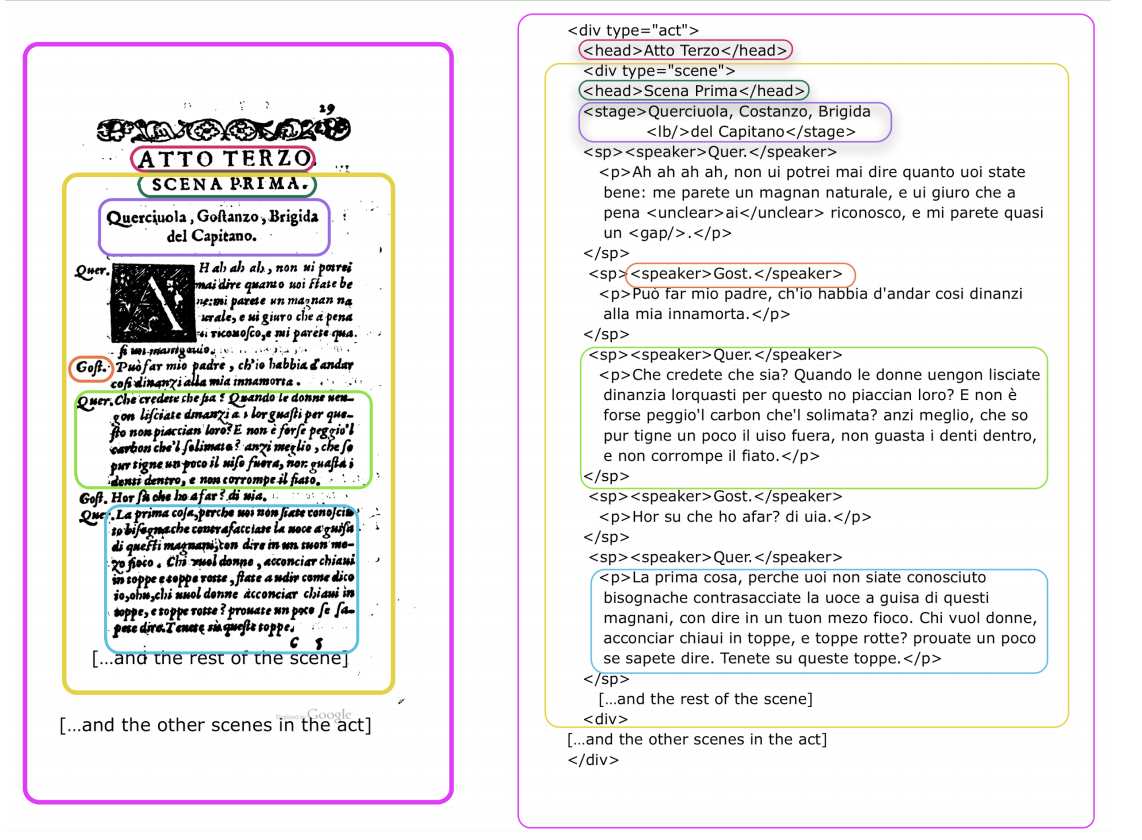What does XML look like? How is it constructed?
Understanding the anatomy of XML is crucial to working with the TEI guidelines. Let’s look at some basic features: elements, tags (opening and closing), and attributes. We also have a handy Jargon Busting (needs link) section at the end should you wish to refer to them.
 Image credit: Constance Crompton
Image credit: Constance Crompton
Element - as building blocks of XML, elements are kind of like containers that provide structure to the human readable content, for example <paragraph>, <name>, and <subject> are elements.
Tag - tags denote elements in a machine readable format. They signal elements to computing applications. They are usually enclosed in angle brackets, for example <p></p> for ‘paragraph’. Tags almost always appear in pairs (opening and closing).
Attribute - include additional information to enrich the element. In this example, additional info is provided about the type of location.
We will look at how to structure these in the sections below.
XML Validity
In an XML file (which includes your XML file encoded using TEI guidelines), there are a few elements you need to have to ensure the document is well-formed (valid according to XML rules). Take a look at this example:
 Image credit: Constance Crompton
Image credit: Constance Crompton
First of all, each start tag in valid XML has to have a corresponding end tag. Think of the Russian Matryoshka dolls: they need a top and a bottom part in order to function. That’s how we make sure information is contained in the right place under the right tag.
For elements in an XML document that are nested, the inner element needs to be properly closed off first prior to closing off the outside element (similar to HTML). For example, <tutorial><topic>XML</topic></tutorial> is valid but <tutorial><topic>XML</tutorial></topic> is not. In this example, the <speaker> element is nested within the <sp> element. <speaker> is opened and closed before the <sp> element can be closed.
XML documents need to have a root element, which is the parent of all the other elements. With TEI XML, this element is generally <TEI>.
When it comes to the actual work of encoding your text, the editor you’re using to mark up your text will often have a feature to help check if your document is valid. A tool like Oxygen will also help identify the problem by providing some additional information. Depending on the tool, you might also have the option to select a template that will have many necessary elements in place for you.
In summary, here are a few basic XML rules:
- Start tags must have corresponding end tags
- Must have a root element
- Nested elements must be nested properly
Questions
- Looking at the image, can you identify another set of opening and closing tags?
- Can you identify another example of an element nested within another element?
Loading last updated date...